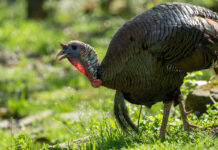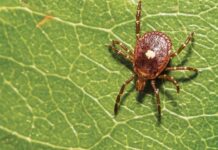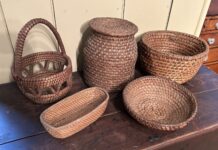
A few years ago, I was treated to an unexpected spectacle. On a warm, rainy afternoon in October, I was strolling along a woodland trail when a movement caught my eye. A beautiful northern red salamander (Pseudotriton ruber) was making its way across the forest floor. “Score,” I thought, bending down to examine the beautiful specimen and take some photos against the colorful leaves. Suddenly, another motion caught my eye, as a second red salamander ambled by. I snatched it up, adding it to the first one for a photo of the duo. Crazy as it seems, a few minutes later, I actually heard another, a big individual, moving with much determination through the leaves. The trio formed a perfect example of how the amphibians sport different colorations at different ages. While my little photo session was in progress, I observed many other red salamanders marching along, all headed in the same direction. Unlike spotted salamanders and Jefferson salamanders which are known for their extraordinary migrations into vernal pools in early spring, red salamanders are not known to exhibit mass movements, but this was the closest thing I’d ever seen.
Northern red salamander

The northern red salamander is a chunky specimen, attaining lengths between 4-6 inches. As its name implies, it is bright red, highlighted by random black spots. As with many animals, bright colors often act as a warning signal, indicating a toxicity that protects them from being eaten by predators. Red salamanders are long-lived (up to 20 years in captivity) and as they age, their coloration changes, darkening to take on a maroon hue. If there is one thing that never changes, it is the salamanders’ mesmerizing golden eyes.
It is hard to believe that, despite their hefty appearance, red salamanders do not have lungs. They belong to a family of lungless salamanders, taking in oxygen through their skin and the lining of their mouths.
They are found in deciduous forests across much of the eastern United States, residing in close proximity to clean streams, seeps or springs. During spring and summer, they travel along the forest floor, feeding on a varied diet including a host of insects, slugs, snails, spiders, earthworms, millipedes and even smaller species of salamanders. They are known for their incredibly quick tongue which nabs prey at lightning speed. Most of their hunting takes place at night, as they remain under the cover of logs and rocks during the day.
Autumn stroll

In autumn, red salamanders begin their return to aquatic environments — small streams where they originated — to breed and deposit their eggs. Clutches, often up to 100, are attached in clusters to submerged rocks and plants. Here they remain, often taking two to three months to develop. Upon hatching, the gilled larvae are completely aquatic, remaining in their streams for up to three years before their terrestrial existence takes over. Adults overwinter under logs and within burrows in damp areas where they await the warmth of spring.
Scientific research states that there is no true breeding migration for northern red salamanders. I have found my share of them over the years — a specimen here and there, under a rock or crawling along in the darkness. Yet, it is hard to explain what I witnessed that rainy autumn day in the forest, as dozens of individuals made their way through the wet leaves all around me. I can only assume that the warm temperatures and gentle rain made conditions ideal for their return to breeding areas and winter abodes. Whatever was going on, it was a spectacle I will never forget.















Fantastic post. Thank you for sharing your experience and phenomenal photos.